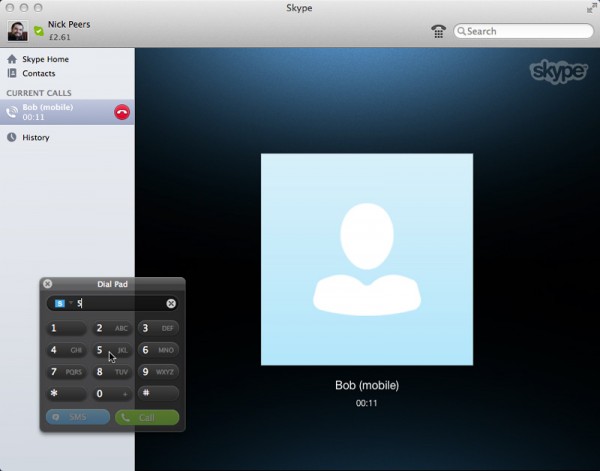
Microsoft has released Skype for Windows 6.3 and Skype for Mac 6.3. Despite identical version numbers, both builds are independent of each other, and are released separately.
While the Windows version is a straight maintenance release, Mac users gain a couple of new features: an in-call DTMF dial pad and the ability to view a slideshow of other participants in a group call when the user is the current speaker.
When speaking in a group call -- a feature limited to Skype Premium users -- the user will see a slideshow of their fellow participants in one of two places: the call monitor or – if someone else is screen sharing -- in the main call view.
The new in-call DTMF dial pad -- triggered by clicking the dial pad in the call toolbar -- allows users to generate DTMF tones when calling lines that use automated systems. DTMF support is already present in the Windows version.
Notable resolved issues in Skype for Mac 6.3 include ensuring the participant list in a large group conversation shows correctly even when continually resizing the Skype window, and users will no longer be sent New Message notifications when the user returns from an offline status with “Do Not Disturb”. One known issue -- birthday notifications failing to work -- remains unresolved.
Skype for Windows 6.3 contains more than a dozen notable fixes, including the correct display of tooltips on non-32bit monitor setups, ensuring all profile edits are saved and no longer freezing the program when opening a snapshot gallery containing a large number of pictures.
Other fixes largely concern problems displaying certain screen elements, but as with Skype for Mac 6.3, an issue with birthday notifications remains unfixed.
Skype for Windows 6.3 and Skype for Mac 6.3 are both available as freeware downloads. Other versions have also recently been updated – Skype for Windows 8 1.5 now supports file-sharing, for example, while you can also download Skype for iPhone 4.6, Skype for iPad 4.6, and Skype for Android 3.2.

